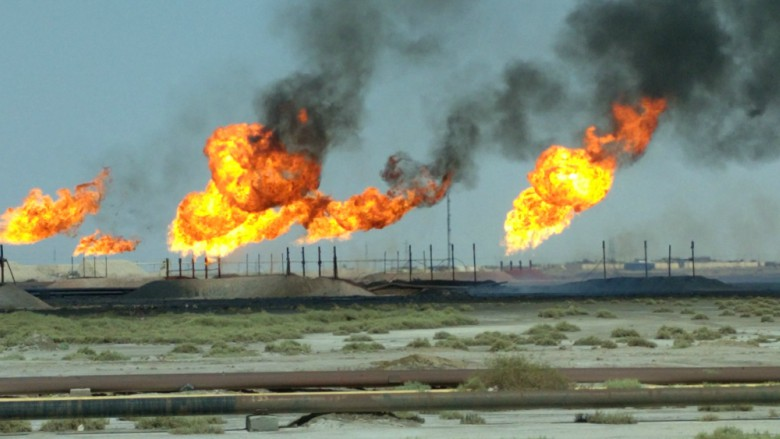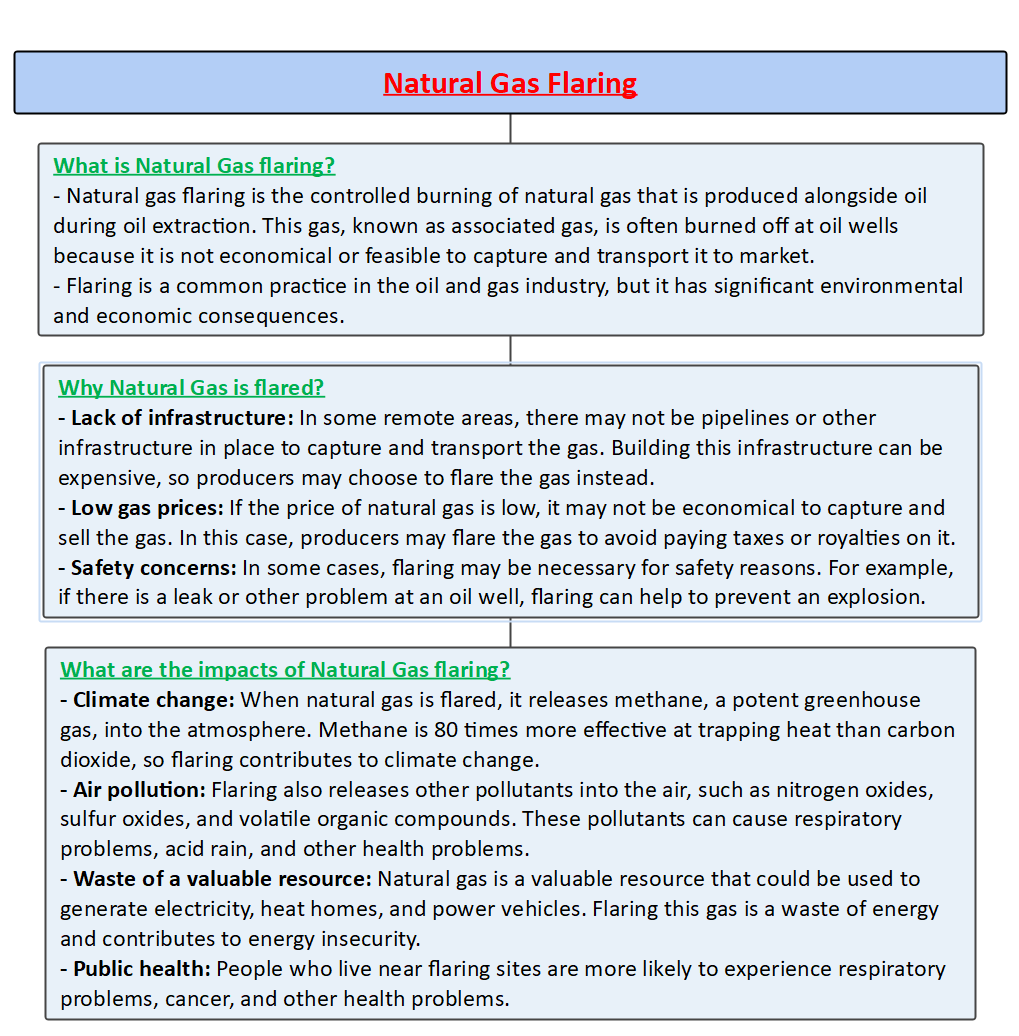Free Courses Sale ends Soon, Get It Now


Free Courses Sale ends Soon, Get It Now



Copyright infringement not intended
Picture Courtesy: https://www.worldbank.org/en/programs/gasflaringreduction/gas-flaring-explained
Context: Natural Gas Flaring releases nitrogen oxides (NOx), which harm air quality and public health.
What is Natural Gas Flaring?
F3UEL Project and New Research
Implications of the study
How much natural gas is flared?
Where is natural gas flaring most common?
Environmental and Health impacts of flaring
What is being done to reduce natural gas flaring?

Conclusion
|
PRACTICE QUESTION Q. Which of the following are the primary reasons for natural gas flaring? 1. Lack of infrastructure in remote areas 2. High gas prices incentivizing capture 3. Safety concerns during oil well problems 4. Regulatory requirements for gas utilization Select the correct code: A) Only one B) Only two C) Only three D) All four Answer: B Explanation: Reasons for natural gas flaring: 1. Lack of infrastructure in remote areas: This is a primary reason for flaring. If pipelines or other means to transport the gas are unavailable, companies may have no choice but to flare it. 2. High gas prices incentivizing capture: This statement is incorrect. High gas prices would discourage flaring and encourage capturing and selling the gas for profit. 3. Safety concerns during oil well problems: This is another primary reason for flaring. Flaring can help prevent explosions or uncontrolled releases of gas in case of leaks or other issues. 4. Regulatory requirements for gas utilization: While some regulations might exist, they typically limit flaring, not require it. Therefore, this is not a primary reason. So, only Statements 1 and 3 are primary reasons for natural gas flaring. |
© 2024 iasgyan. All right reserved